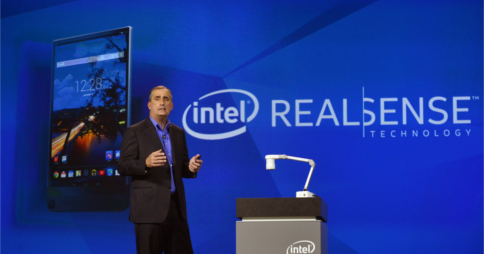
Showcasing the new technologies in a keynote speech at the Consumer Electronics Show (CES) conference in Las Vegas, Intel CEO Brian Krzanich said that, increasingly, devices would move toward easier and more natural controls—away from mice and keyboards and flat screens to devices which could better interpret physical gestures and voice commands as controls.
“Computing [will] gain a new dimension and move from a two dimensional world to a three dimensional world,” Krzanich said.
The CEO illustrated this—what Intel calls RealSense technology—using a tablet computer and a photography app. With a simple finger tap gesture he was able to shift the point of focus in a photo. Using a dragged finger gesture he was able to add colour to different parts of a black and white photo.
In a similar demonstration, voice and gesture commands were also used to control a video and navigate a web page. Another demonstration showed how a virtual piano could be played using gestures made in mid-air.
Krzanich said Intel was also working on developing a wearable jacket which would assist vision impaired users. Using sensors, the jacket picks up movement around the user—such as someone extending their hand to shake—and translates that information into subtle vibrations against the wearer’s body. In effect, the jacket makes up for lost information from one sense—sight—and transfers it to another—touch.
Intel also made a number of further announcements about forthcoming technologies that could be used to build devices that could aid people with disabilities—such as new and additional wearable devices and a plug-in that can turn televisions into computers.
Top of page

